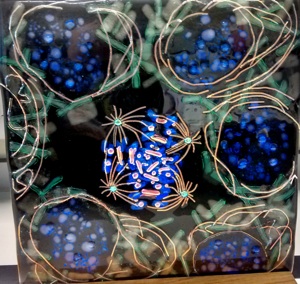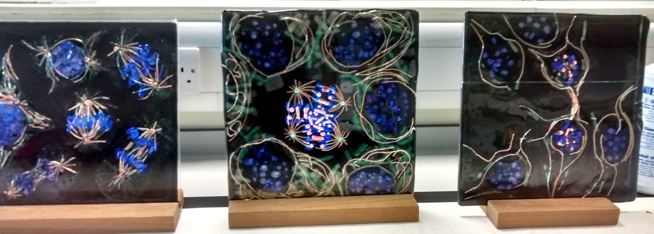Glass Art in Uni Visitor Centre
2015

There are three fused glass pieces on display at the Unviersity Visitor Centre on Potterow. They are based on fluorescence microscopy by the Schirmer Lab, Wellcome Trust Centre for Cell Biology, University of Edinburgh.
Fluorescent stains are used to highlight proteins of interest.
The red / pink areas are the most interesting to this research. They show a protein (KLHL-31 normally associated with the nuclear envelope) that appears to be involved in cell division. Mutations in nuclear envelope proteins cause a range of diseases, such muscular dystrophies, and neuropathies.
DNA is stained blue, and the blue areas are the nucleus of the cell.
Tubulin / microtubules are stained red/orange. These proteins form the underlying structure or ‘skeleton’ of the cell.
Actin is stained green, actin is a protein involved in cell movement.
Dividing human cells under a fluorescence microscope.
09/04/2015
There is an exhibition of our fused glass in the University of Edinburgh Visitor centre for Spring 2015
The work was created by Bethany Harker, Laura Reed and Sarah Keer-Keer



